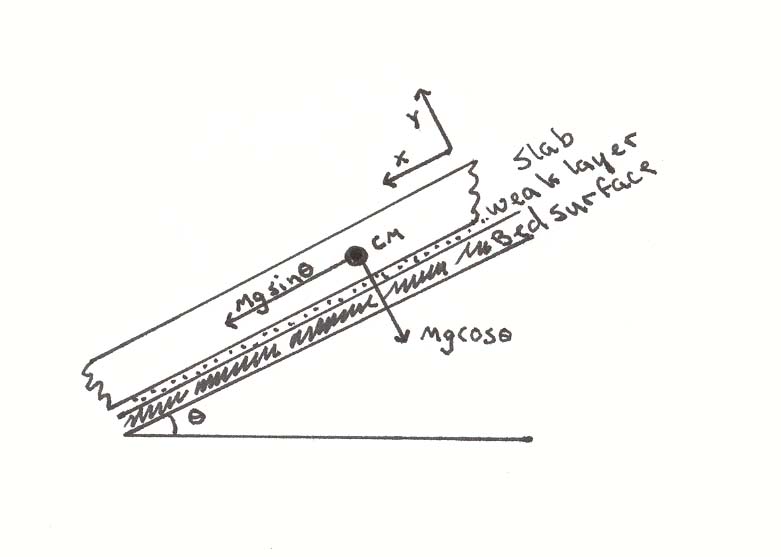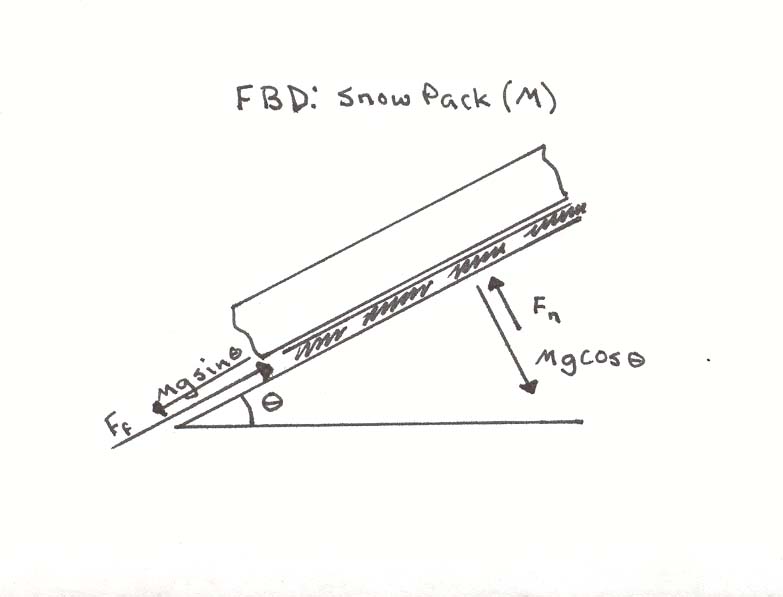
The forces in the snowpack can be broken into their X and Y components for analysis. |
|

If ths snowpack is already "stressed out" all it takes is a little help from a human to tip the strength strain balance. |
| A human triggered
avalanche occurs when the snow is at a critical balance between strength
and strain. The bonds supporting the slab are just barely strong
enough to hold it in place. Then a skier or snowmachiner comes along
and adds more weight to the snow pack. Whether it’s the strength of
the weak layer or the friction force that is exceeded the snow pack is suddenly
applying more strain to its bounds then the bounds can support. The
critical balance between strength and strain has tipped and an avalanche
is now in progress. |
Snow as a Material
Slab Avalanche Formation
Prevention
Bibliography
